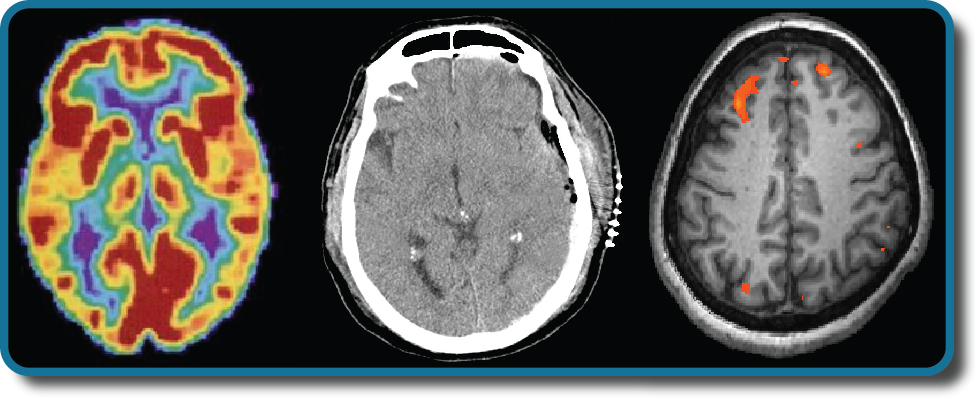| << Chapter < Page | Chapter >> Page > |

Have you ever taken a device apart to find out how it works? Many of us have done so, whether to attempt a repair or simply to satisfy our curiosity. A device’s internal workings are often distinct from its user interface on the outside. For example, we don’t think about microchips and circuits when we turn up the volume on a mobile phone; instead, we think about getting the volume just right. Similarly, the inner workings of the human body are often distinct from the external expression of those workings. It is the job of psychologists to find the connection between these—for example, to figure out how the firings of millions of neurons become a thought.
This chapter strives to explain the biological mechanisms that underlie behavior. These physiological and anatomical foundations are the basis for many areas of psychology. In this chapter, you will learn how genetics influence both physiological and psychological traits. You will become familiar with the structure and function of the nervous system. And, finally, you will learn how the nervous system interacts with the endocrine system.
Arnst, C. (2003, November). Commentary: Getting rational about health-care rationing. Bloomberg Businessweek Magazine . Retrieved from http://www.businessweek.com/stories/2003-11-16/commentary-getting-rational-about-health-care-rationing
Berridge, K. C.,&Robinson, T. E. (1998). What is the role of dopamine in reward: Hedonic impact, reward learning, or incentive salience? Brain Research Reviews, 28 , 309–369.
Chandola, T., Brunner, E.,&Marmot, M. (2006). Chronic stress at work and the metabolic syndrome: A prospective study. BMJ, 332 , 521–524.
Comings, D. E., Gonzales, N., Saucier, G., Johnson, J. P.,&MacMurray, J. P. (2000). The DRD4 gene and the spiritual transcendence scale of the character temperament index. Psychiatric Genetics, 10 , 185–189.
Confer, J. C., Easton, J. A., Fleischman, D. S., Goetz, C. D., Lewis, D. M. G, Perilloux, C.,&Buss, D. M. (2010). Evolutionary psychology: Controversies, questions, prospects, and limitations. American Psychologist, 65 , 110–126.
Gaines, C. (2013, August). An A-Rod suspension would save the Yankees as much as $37.5 million in 2014 alone. Business Insider . Retrieved from http://www.businessinsider.com/an-a-rod-suspension-would-save-the-yankees-as-much-as-375-million-in-2014-2013-8
Gardner, E. L. (2011). Addiction and brain reward and antireward pathways. Advances in Psychosomatic Medicine, 30 , 22–60.
George, O., Le Moal, M.,&Koob, G. F. (2012). Allostasis and addiction: Role of the dopamine and corticotropin-releasing factor systems. Physiology&Behavior, 106 , 58–64.
Glaser, R.,&Kiecolt-Glaser, J. K. (2005). Stress-induced immune dysfunction: Implications for health. Nature Reviews Immunology, 5 , 243–251.
Gong, L., Parikh, S., Rosenthal, P. J.,&Greenhouse, B. (2013). Biochemical and immunological mechanisms by which sickle cell trait protects against malaria. Malaria Journal . Advance online publication. doi:10.1186/1475-2875-12-317
Hardt, O., Einarsson, E. Ö.,&Nader, K. (2010). A bridge over troubled water: Reconsolidation as a link between cognitive and neuroscientific memory research traditions. Annual Review of Psychology, 61 , 141–167.
Macmillan, M. (1999). The Phineas Gage Information Page. Retrieved from http://www.uakron.edu/gage
March, J. S., Silva, S., Petrycki, S., Curry, J., Wells, K., Fairbank, J., … Severe, J. (2007). The treatment for adolescents with depression study (TADS): Long-term effectiveness and safety outcomes. Arch Gen Psychiatry, 64 , 1132–1143.
Mustanski, B. S., DuPree, M. G., Nievergelt, C. M., Bocklandt, S., Schork, N. J.,&Hamer, D. H. (2005). A genome wide scan of male sexual orientation. Human Genetics, 116 , 272–278.
National Institute on Drug Abuse. (2001, July). Anabolic steroid abuse: What are the health consequences of steroid abuse? National Institutes of Health . Retrieved from http://www.drugabuse.gov/publications/research-reports/anabolic-steroid-abuse/what-are-health-consequences-steroid-abuse
Squire, L. R. (2009). The legacy of patient H. M. for neuroscience. Neuron, 61 , 6–9.
Tienari, P., Wynne, L. C., Sorri, A., et al. (2004). Genotype–environment interaction in schizophrenia spectrum disorder: long-term follow-up study of Finnish adoptees. British Journal of Psychiatry, 184 , 216–222.
University of Utah Genetic Science Learning Center. (n.d.). What are genetic disorders? Retrieved from http://learn.genetics.utah.edu/content/disorders/whataregd/

Notification Switch
Would you like to follow the 'Psychology' conversation and receive update notifications?